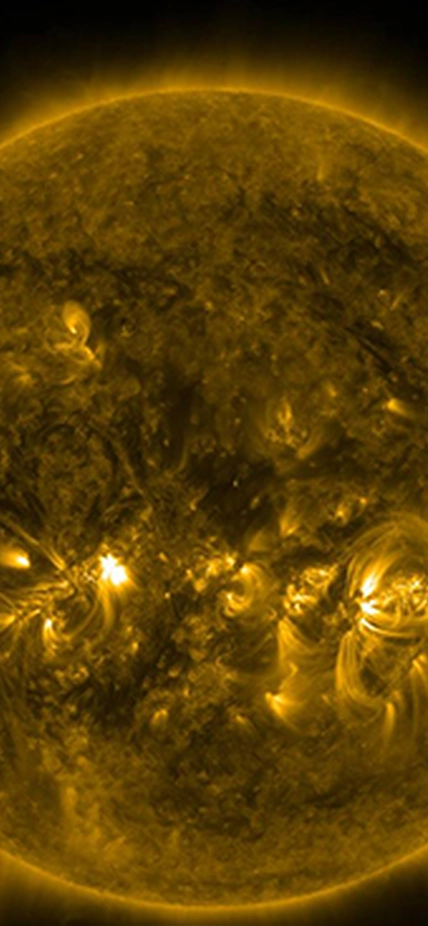Pasadena, CA— New work from a team of astronomers led by Carnegie’s Jennifer van Saders indicates that one recently developed method for determining a star’s age needs to be recalibrated for stars that are older than our Sun. This is due to new information about the way older stars spin, as spin rate is one of the few windows into stellar ages. Their findings, published in Nature, have implications for our own Solar System, as they indicate that our own Sun might be on the cusp of a transition in its magnetic field.
Just like planets, stars rotate around an axis. As stars age, this spin slows down due to the star’s magnetic field acting on its stellar wind, which is a flow of gas moving away from the star. The loss of mass, as the flowing gases get caught in the magnetic field and spin outward until they are ejected, affects the Sun’s angular momentum and causes the slowdown. In this way, the magnetic field acts like a brake.
About a decade ago, it was discovered that this phenomenon can be used to calculate the age of a Sun-like star if its rotation rate and mass are known. The process is called gyrochronology. However, in their new paper van Saders and her team demonstrate that stars don’t spin down exactly as expected when they get older. The correction affects the gyrochronological calculation for older stars.
Prior to gyrochronology, scientists would use properties of a star that change over time like the surface temperature and luminosity to infer its age. However, the changes are so slow and minimal that precise inferences of age are very difficult. Another, newer, method involves studying sound waves in the interiors of stars, which can detect changes in a star’s deep core where hydrogen is burned to helium. However, these kinds of observations are very expensive and require very bright targets, so they can’t be used for many stars. Measuring rotation, on the other hand, is fairly straightforward—if we can validate and calibrate gyrochronology, it could be a powerful tool for measuring ages in large numbers of stars
“The ability to determine a star’s age is important for improving our understanding of the life cycles of astronomical systems—for cataloging how the star and the objects near it have changed through history and for predicting how they might change in the future,” van Saders explained. “Gyrochronology has the potential to be a very precise method for determining the ages of the average Sun-like star, provided we can get the calibrations correct.”
Data from the Kepler spacecraft now make it possible to test the calibrations of gyrochronology for stars older than our Sun, which is what van Saders and her team set out to do. What they found is that standard models predict more slowdown as stars age than actually occurs; leading the team to conclude that the magnetic field’s braking action is weaker in intermediate-aged and old stars—stars older than the Sun.
Their findings imply that something fundamentally changes in the magnetization of stellar winds as stars get older. If so, our own Sun could be close, in an astronomical sense, to a critical transition to a weakened braking power for its magnetic field. This is something that would likely occur on timescales that seem long to humans, but very fast in comparison to the lifetime of the Sun. It’s impossible to say how quickly based on current data, but the team is now working on answering this and related questions.
More concretely, it means that using current gyrochronologic calculation techniques will not be as accurate for stars that are more than halfway through their lifetimes as they are for younger stars.
“I think this is a very important result that will greatly improve our ability to understand the stellar aging process,” said Carnegie Observatories Director John Mulchaey.
Top Image Caption: Solar image courtesy of NASA's Solar Dynamics Observatory.
__________________
Support for the authors was contributed by the adopt-a-star crowdfunding program administered by White Dwarf Research Corp.; the UK Science and Technology Facilities Council (STFC); NASA grants; the CNES grants at CEA; and the European Community Seventh Framework Programme. This research was supported in part by the National Science Foundation. Funding for the Stellar Astrophysics Centre is provided by The Danish National Research Foundation. The research is supported by the ASTERISK project (ASTERoseismic Investigations with SONG and Kepler ) funded by the European Research Council.
